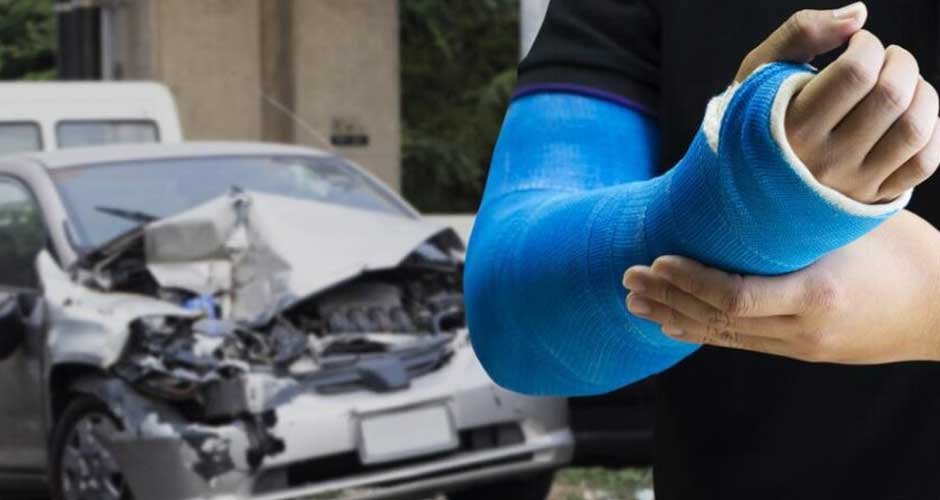Auto accidents can cause various injuries, ranging in severity and impact. The aftermath of an accident may be devastating for individuals involved, ranging from small scrapes and bruises to life-altering traumas. Understanding the most prevalent forms of car accident injuries is critical for drivers and passengers. With the help of a skilled car accident lawyer, this blog post aims to shed light on some of the most frequently encountered injuries, their potential consequences, and the importance of seeking immediate medical attention after an accident.
1. Whiplash
Whiplash is one of the most common injuries from auto accidents, particularly in rear-end collisions. It occurs when the head is abruptly thrown forward and backward, causing the neck muscles and ligaments to strain. Symptoms of whiplash include neck pain, stiffness, headaches, and dizziness. Although whiplash is often considered a minor injury, it can lead to chronic pain and long-term complications if not properly treated.
2. Head Injuries
Head injuries are a significant concern in auto accidents, ranging from mild concussions to severe traumatic brain injuries (TBIs). Even with seat belts and airbags, a crash might cause the head to strike the steering wheel, dashboard, or side window. Headaches, dizziness, disorientation, memory loss, and nausea are all head injury symptoms. An immediate medical examination is critical for determining the severity of the injury and initiating proper therapy.
3. Bone Fractures
The force and impact of a car accident can result in fractures or broken bones. Common fractures include those in the arms, legs, ribs, and pelvis. Fractures can vary in severity, with some requiring casts or splints and others necessitating surgical intervention. Recovery time depends on the nature and location of the fracture, and physical therapy may be necessary to regain strength and mobility.
4. Back and Spinal Cord Injuries
Back and spinal cord injuries can occur when the spine is subjected to extreme forces during a car crash. These injuries can range from herniated discs and spinal fractures to more severe damage, such as spinal cord compression or paralysis. Symptoms may include back pain, numbness or tingling, muscle weakness, and bowel or bladder control loss. Immediate medical attention is crucial to prevent further damage and maximize the chances of recovery.
5. Soft Tissue Injuries
Soft tissue injuries involve damage to muscles, ligaments, and tendons. Sprains, strains, and contusions are common in auto accidents due to sudden impacts or awkward body movements during the collision. Symptoms may include pain, swelling, bruising, and restricted range of motion. While these injuries may initially seem minor, they can cause prolonged discomfort and require rehabilitation or physical therapy for proper healing.
6. Psychological and Emotional Trauma
In addition to physical injuries, auto accidents can also result in psychological and emotional trauma. Survivors may experience post-traumatic stress disorder (PTSD), anxiety, depression, or a general fear of driving or being in a vehicle. These psychological effects can significantly impact a person’s quality of life and may require therapy or counseling to address and overcome.
7. Chest and Abdominal Injuries
During a car accident, the impact can cause significant trauma to the chest and abdominal area. The force from the seatbelt or steering wheel can lead to fractured ribs, internal bleeding, organ damage, or even punctured lungs. Symptoms of these injuries may include difficulty breathing, chest pain, abdominal pain, and nausea. Prompt medical evaluation is crucial to assess the extent of the injuries and initiate appropriate treatment, which may involve surgeries, medications, or other interventions.
8. Facial and Dental Injuries
Facial and dental injuries are common in auto accidents, particularly when airbags deploy or when the face makes contact with the dashboard, steering wheel, or side window. These injuries include facial fractures, lacerations, dental fractures or avulsions, and temporomandibular joint (TMJ) injuries. Symptoms may include facial pain, swelling, difficulty chewing, and bite or jaw movement changes. Seeking immediate medical and dental attention is vital to address potential fractures, prevent infection, and preserve dental health through proper treatment, which may involve surgeries, orthodontics, or restorative dental procedures.
Conclusion
Auto accidents can lead to a broad range of visible and hidden injuries. From whiplash and head injuries to fractures, spinal cord damage, and psychological trauma, the consequences of an accident can be long-lasting. Seeking immediate medical attention is crucial, even if injuries appear minor initially. Prompt diagnosis and appropriate treatment, with the assistance of experienced legal professionals like Mokaram Law Firm, can prevent complications and promote faster recovery.
Additionally, it is essential to be aware of the potential psychological effects of an accident and seek the necessary support to cope with the emotional aftermath. By understanding these common injuries, we can emphasize the importance of safe driving practices and advocate for better road safety measures.






